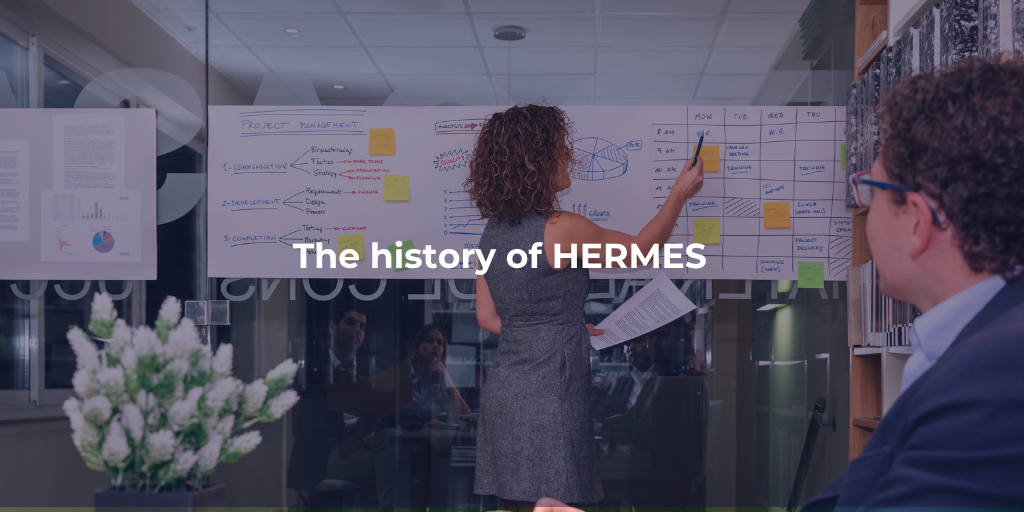Categories
Tags
Newsletter
Subscribe to the QRP International neswletter and get all the news on trends, useful contents and invitations to our upcoming events
Subscribe
HERMES is a comprehensive project and programme management system that was developed specifically for organisational change, IT projects and service development. It was created by the Swiss Federal Government and is available free of charge as an open standard. HERMES is widely used, particularly in the areas of information technology, service and product development, and corporate organisation.
It has been used by the federal administration since 1975 and is continuously being improved. HERMES promotes a common understanding within projects and supports those involved with its clear structure, which can be flexibly adapted to different project requirements.
In this article we focus on the history of HERMES from its beginning.
The Swiss Federal Administration developed HERMES to standardise project management practices for IT projects. Its focus was primarily on the needs of government and public administration projects, particularly in the realm of informatics.
The first public version of HERMES was introduced to support structured IT project management. It was heavily process-oriented, ensuring a clear definition of project phases and responsibilities, mainly for public administration.
HERMES was updated with additional processes, making it applicable to a broader range of IT projects, including system integration. It became the go-to methodology for government-related IT projects and gained more users outside of IT.
HERMES 3.0 marked a major revision, broadening its scope beyond IT projects. This version introduced new modules for managing non-IT projects, such as construction and organisational change. It became more flexible and easier to tailor to different project needs.
The Swiss government made the use of HERMES mandatory for all federal IT projects, formalising its role as the key methodology for public administration project management.
During this period, HERMES underwent several small improvements and refinements to address feedback from users. These updates streamlined processes and introduced new templates for reporting and documentation.
HERMES 5 was a significant overhaul, transforming the methodology into a universal project management tool, applicable to both IT and non-IT projects. Key improvements included:
A digital tool was introduced, allowing users to customise and manage their project templates online. This was part of a drive to modernise the methodology and make it more accessible to a wider audience.
HERMES 5 received updates to align with modern trends in digitalisation and agile project management. These updates enhanced the methodology’s ability to integrate agile practices with more traditional project structures.
The most recent update focused on improving support for hybrid project management approaches. HERMES 5 was further enhanced to help organisations manage projects that blend traditional (waterfall) and agile methodologies. This update also introduced refinements in project phase models, stakeholder management, and risk analysis, keeping pace with modern project management demands.
HERMES has evolved from a methodology strictly focused on IT and government projects to a flexible, modular project management tool applicable across industries and project types. The key to its evolution has been:
HERMES historical trajectory shows us how it has kept pace with changing project management needs, maintaining its relevance in a world that increasingly blends agile and traditional approaches.
In summary, HERMES certification in project management has established itself as an important tool for project success in various industries. Its long history, based on the need for structured and efficient project management practices, reflects the ever-changing challenges facing businesses today. As companies increasingly value effective project execution and strategic alignment, HERMES certification is a testament to the importance of high-quality training and best practices. By applying the principles and methods of HERMES certification, project managers can not only improve their own skills, but also contribute to the success of their teams and organisations.
HERMES is an open project management methodology designed for information technology, services, products, and business organisation. It plays a crucial role in the success of numerous projects by providing a shared framework for users, creators, and operators. As an open standard, HERMES is widely adopted not only within the federal administration but also in cantons, municipalities, educational institutions, and companies.
Discover QRP International’s calendar of HERMES courses.